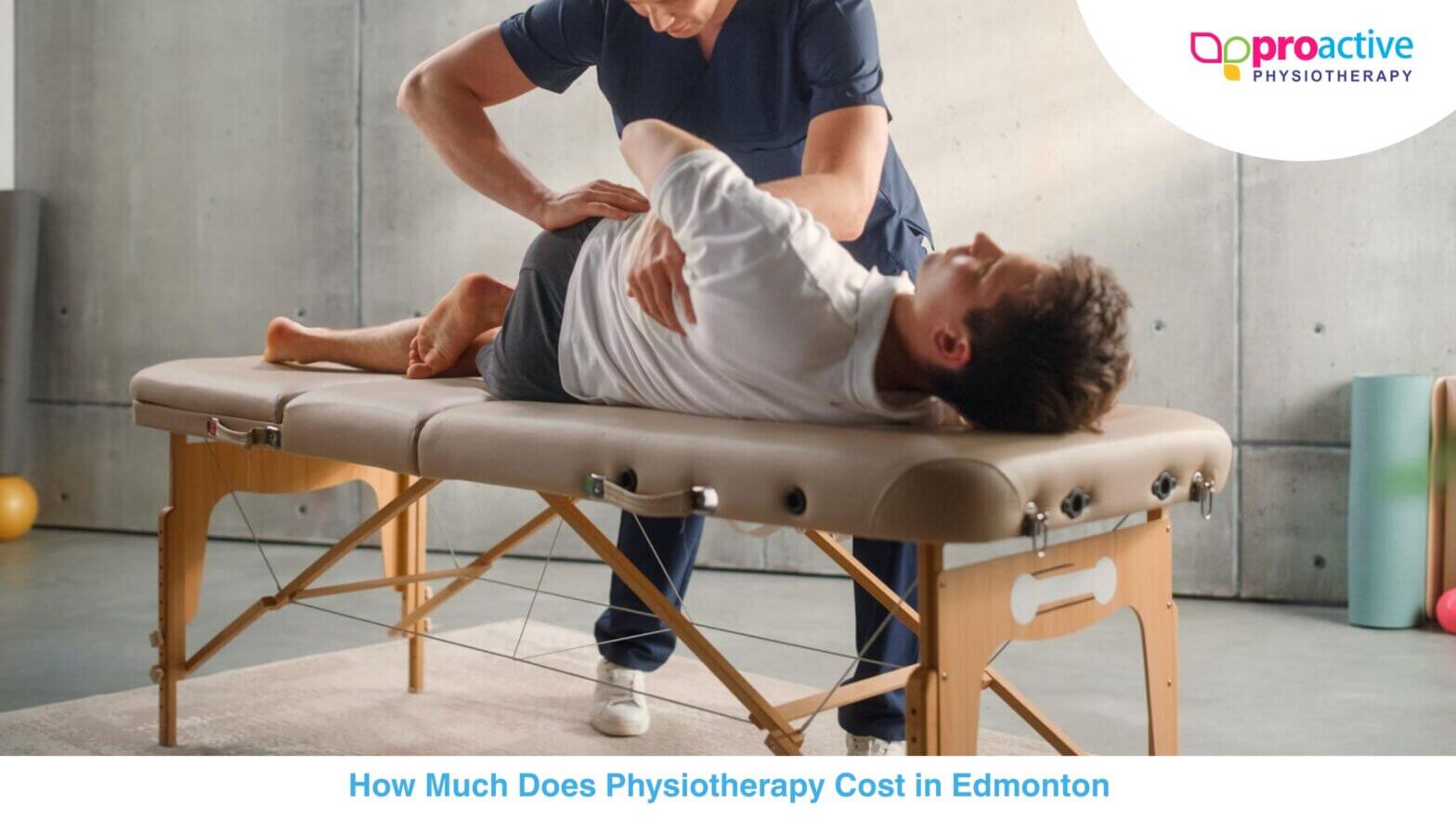Ever wondered how a therapist can help speed up your recovery from a car accident? Look no further! Physiotherapy exercises are here to save the day. These targeted movements can work wonders in improving mobility in your neck and reducing pain caused by whiplash. By focusing on specific exercises, you can promote healing of the ligaments in your right shoulder and get back to feeling like yourself again.
Whiplash physiotherapy exercises target the ligaments and surrounding tissues of your neck, helping to strengthen muscles, increase flexibility, and restore normal function after a car accident. These simple exercises can be done at home without any fancy equipment or expensive gym memberships, making it easier for you to resume regular activities.
To make your physical therapy journey more effective, we’ve got you covered with informative videos that demonstrate each exercise. So, if you’re ready to take control of your whiplash recovery steps, simply click on the video links provided and let’s get moving!
Remember, physiotherapy exercises are the key activity for your healing process. Let’s dive in and discover how these steps and repetitions can bring you relief and accelerate your healing process. Don’t forget to consult with your doctor for guidance.
Common Symptoms of Whiplash
Recognizing the signs and symptoms of whiplash is crucial for understanding this type of injury. If you have recently been involved in a car accident or experienced any trauma to your neck, it’s essential to be aware of the common indicators associated with whiplash. Physical therapy can help alleviate pain and restore mobility in the thumb. It is recommended to seek treatment while in a seated position for optimal results. Make sure to schedule regular appointments to see progress over time.
Neck Pain and Stiffness
One of the most prevalent symptoms of whiplash is neck pain and stiffness. This discomfort often occurs due to the sudden jerking motion that happens during an accident or any other incident that causes the head to forcefully move back and forth. Physical therapy can be beneficial in relieving aching or soreness in your neck, making it easier to turn your head from side to side.
Headaches and Dizziness
Whiplash can strain the muscles in your neck, causing tension headaches that range from mild to severe and can last for days or even weeks. Dizziness may occur due to the impact on your spine, affecting balance and stability.
Shoulder or Arm Pain
In some cases, individuals experiencing whiplash may also encounter shoulder or arm pain. The forceful motion during an accident can cause damage not only to the neck but also to surrounding areas such as shoulders, arms, and thumbs. Pain in these regions could indicate nerve impingement or muscle strain caused by whiplash.
Importance of Seeking Medical Attention
If you experience any signs of whiplash following an accident, it is imperative that you seek medical attention promptly. While some people may dismiss their symptoms as minor discomforts that will resolve on their own, untreated whiplash injuries can lead to long-term complications.
Whiplash injuries have varying degrees of severity, so even if you believe your symptoms are mild, consulting a healthcare professional is crucial for accurate diagnosis and appropriate treatment options. They can provide a comprehensive evaluation and recommend suitable whiplash physiotherapy exercises to aid in your recovery.
Importance of Exercise in Treating Neck Pain After Whiplash
Whiplash injuries can cause significant discomfort and pain in the neck area. To effectively manage and alleviate these symptoms, exercise plays a crucial role. By engaging in targeted whiplash physiotherapy exercises, individuals can restore strength and flexibility to their neck muscles, prevent long-term complications, and facilitate rehabilitation.
Restoring Strength and Flexibility
One of the primary benefits of exercise in treating neck pain after whiplash is its ability to restore strength and flexibility to the affected muscles. When the neck undergoes sudden acceleration-deceleration forces, the surrounding muscles may become strained or sprained. As a result, they weaken and lose their range of motion.
By incorporating specific exercises into a treatment plan, individuals can gradually rebuild muscle strength while improving flexibility. These exercises typically focus on gently stretching and strengthening the neck muscles. For instance:
- Neck rotations: Slowly turn your head from side to side, aiming for a comfortable range of motion without causing any pain.
- Chin tucks: Gently retract your chin inward while keeping your head level. Hold this position for a few seconds before releasing.
- Shoulder rolls: Roll your shoulders forward and backward in a circular motion to alleviate tension around the neck area.
Regularly performing these exercises helps enhance blood circulation to the injured muscles, facilitating healing processes while reducing stiffness and discomfort.

Preventing Long-Term Complications
Exercise plays an integral role in preventing long-term complications that may arise from whiplash injuries. Without proper rehabilitation measures, individuals may experience ongoing pain or develop chronic conditions such as cervical radiculopathy—a condition characterized by nerve compression leading to arm weakness or numbness.
By engaging in targeted exercises under professional guidance, patients can strengthen not only their neck muscles but also improve overall posture and stability. This reduces strain on other structures like nerves and discs within the cervical spine, minimizing the risk of long-term complications. Specific exercises that focus on improving neck muscle endurance can help prevent future injuries.
Tailored Exercise Programs for Effective Rehabilitation
To achieve optimal results, it is essential to follow a tailored exercise program designed by a qualified physiotherapist or healthcare professional. Each individual’s condition and needs may vary, requiring a personalized approach to rehabilitation.
A comprehensive assessment by a healthcare provider will determine the specific exercises suitable for the patient’s condition. The exercise program may include a combination of stretching, strengthening, and aerobic exercises tailored to address the individual’s unique requirements. These programs may involve:
- Gentle warm-up exercises: Before starting any targeted exercises, it is crucial to warm up the muscles properly. This may include light cardiovascular activities such as walking or stationary cycling.
- Neck stretches: Stretching exercises like lateral neck flexion (ear-to-shoulder stretch) and posterior neck stretch (chin-to-chest) can help alleviate tension and increase flexibility.
- Strengthening exercises: Strengthening the neck muscles through resistance training using therabands or bodyweight exercises helps restore stability and support.
- Aerobic conditioning: Engaging in low-impact aerobic activities such as swimming or brisk walking improves overall fitness while promoting healing.
By following a customized exercise plan, individuals can experience significant improvements in their mobility, pain reduction, and overall quality of life.
Best Stretches and Exercises for Whiplash Injury
Whiplash injuries can cause significant discomfort and limited mobility in the neck area. To aid in the recovery process, it is crucial to engage in specific stretches and exercises designed to alleviate tension and strengthen the affected muscles.
Gentle Neck Stretches for Tension Relief and Improved Mobility
When dealing with whiplash injury, gentle neck stretches can play a vital role in relieving tension and improving mobility. Here are some effective stretches you can try:
- Neck tilt: Sit or stand tall, slowly lower your left ear towards your left shoulder until you feel a stretch on the right side of your neck. Hold for 15-30 seconds, then repeat on the other side.
- Chin tucks: Start by sitting with good posture, gently retract your chin as if creating a double chin while keeping your head level. Hold for 5-10 seconds before releasing.
- Head turns: Face forward and slowly turn your head to one side until you feel a gentle stretch. Hold for 15-30 seconds before returning to the starting position. Repeat on the other side.
By incorporating these gentle neck stretches into your daily routine, you can gradually reduce muscle tension and enhance flexibility in the affected areas.
Strengthening Exercises Targeting Whiplash-Affected Muscles
Strengthening exercises are essential for restoring muscle function after a whiplash injury. These exercises focus on targeting specific muscles that may have been weakened due to trauma. Here are some recommended strengthening exercises:
- Isometric neck exercise: Place your hand against your forehead while gently pushing forward with your head against the resistance provided by your hand. Hold this position for 5-10 seconds before releasing. Repeat the exercise by placing your hand against the back of your head and pushing backward.
- Shoulder blade squeeze: Sit or stand with good posture, gently squeeze your shoulder blades together as if trying to hold a pencil between them. Hold for 5-10 seconds before releasing.
- Resistance band exercises: Attach a resistance band to a sturdy object at chest height. Holding the other end of the band, slowly pull it towards you while keeping your elbows bent and close to your sides. This exercise helps strengthen the muscles in your upper back and shoulders.
By consistently performing these strengthening exercises, you can gradually rebuild muscle strength and stability in the affected areas.
Recommended Exercises for Optimal Whiplash Recovery
To ensure optimal recovery from whiplash injuries, it is crucial to follow exercises recommended by professionals. These exercises are specifically designed to promote healing and prevent further injury. Here are some commonly suggested exercises:
- Range of motion exercises: Gently move your neck through its full range of motion, including flexion, extension, rotation, and lateral bending. Perform these movements slowly and without causing pain.
- Posture correction exercises: Engage in exercises that focus on improving posture, such as scapular retractions or chin tucks mentioned earlier. Correcting poor posture can alleviate strain on the neck muscles and promote better alignment.
- Core strengthening exercises
Five Home Exercises for Whiplash Treatment
If you’re on a whiplash treatment journey, incorporating home exercises into your routine can greatly aid in your recovery process. These exercises are simple yet effective, designed to relieve neck discomfort and support your healing. Let’s explore five easy-to-follow home exercises that can make a significant difference in your whiplash treatment.
Easy Stretching Techniques to Relieve Neck Discomfort
Stretching is a crucial component of whiplash physiotherapy exercises as it helps alleviate neck pain and improves flexibility. Here are some easy stretching techniques you can do at home:
- Neck Rotation: Sit or stand with your back straight and slowly turn your head to the right until you feel a gentle stretch. Hold for 15-30 seconds and repeat on the left side.
- Chin Tucks: Begin by sitting upright with your shoulders relaxed. Gently retract your chin, bringing it backward while keeping your eyes forward. Hold this position for 5-10 seconds, then relax.
- Shoulder Rolls: Stand tall with arms relaxed at your sides. Roll both shoulders forward in a circular motion, completing 10 rotations, then reverse the direction for another 10 rotations.
Strengthening Exercises Using Resistance Bands or Bodyweight
In addition to stretching, strengthening exercises play a vital role in whiplash recovery by improving muscle stability and preventing future injuries. Here are two simple exercises that utilize resistance bands or bodyweight:
- Resistance Band Rows: Attach a resistance band securely around a stable object at waist height. Hold one end of the band in each hand with arms extended forward and palms facing inward. Pull the bands toward your chest while squeezing shoulder blades together, then slowly return to the starting position.
- Plank: Start by lying face down on the floor or mat, propping yourself up on forearms and toes. Keep your body straight, engage your core muscles, and hold this position for 30 seconds to a minute. Repeat for several sets.

Master Relaxation Techniques for Healing and Muscle Tension Reduction
Relaxation techniques are essential for promoting healing and reducing muscle tension associated with whiplash. Here’s a relaxation exercise you can practice at home:
- Deep Breathing: Find a quiet and comfortable spot to sit or lie down. Close your eyes and take slow, deep breaths in through your nose, allowing your abdomen to rise as you fill your lungs with air. Exhale slowly through your mouth, releasing any tension or stress. Repeat this deep breathing exercise for several minutes.
Incorporating these five home exercises into your daily routine can significantly contribute to the success of your whiplash treatment journey. Remember to consult with a qualified physiotherapist before starting any new exercise program, especially if you’re experiencing severe pain or have specific medical conditions. Stay consistent, listen to your body, and gradually increase the intensity of exercises as advised by your healthcare professional.
By dedicating time each day to these exercises, you’ll be taking proactive steps towards recovering from whiplash and regaining comfort in your daily life.
Effective Neck Pain Exercises Following Recent Whiplash Injury
Neck pain is a common and distressing symptom experienced by individuals who have recently suffered from whiplash. While seeking professional help, incorporating specific exercises into your recovery routine can greatly aid in alleviating pain and promoting healing.
Gentle Range-of-Motion Exercises: Reducing Pain and Stiffness
During the initial stages of whiplash recovery, gentle range-of-motion exercises play a crucial role in reducing pain and stiffness. These exercises work by gradually increasing the flexibility of your neck muscles and improving blood circulation to the affected area. Here are some effective range-of-motion exercises to consider:
- Neck rotations: Slowly turn your head from side to side, aiming to increase the range of motion without causing discomfort.
- Neck tilts: Gently tilt your head towards each shoulder, holding each position for a few seconds before returning to the neutral position.
- Chin tucks: Start with your head in a neutral position, then slowly draw your chin inward towards your throat while keeping your eyes level.
By incorporating these gentle exercises into your daily routine, you can help reduce pain and stiffness associated with whiplash injuries.
Targeted Strengthening Exercises: Supporting Healing Process
Once you have progressed through the initial stages of recovery, targeted strengthening exercises become essential for supporting the healing process after a recent whiplash injury. These exercises focus on building strength in the muscles surrounding the neck, providing stability and preventing further damage. Consider including these strengthening exercises in your regimen:
- Isometric neck contractions: Place your hand against your forehead and gently push forward while resisting with your neck muscles for 5-10 seconds.
- Shoulder blade squeezes: Sit or stand with your arms by your sides, then squeeze your shoulder blades together, holding for a few seconds before releasing.
- Resistance band exercises: Attach a resistance band to a sturdy anchor point and perform various pulling and stretching movements to engage the neck and shoulder muscles.
By regularly performing these targeted strengthening exercises, you can help support the healing process and promote long-term recovery from whiplash injuries.
Exercises to Avoid: Preventing Further Damage
While exercise is beneficial during whiplash recovery, it’s important to avoid certain activities that may exacerbate your condition or cause further damage. In the early stages of recovery, it is generally advised to avoid:
- High-impact activities: Activities such as running or jumping that put excessive strain on the neck should be avoided until cleared by a healthcare professional.
- Contact sports: Participating in contact sports increases the risk of re-injury and should be avoided until fully recovered.
- Wearing soft collars for extended periods: While soft collars may provide temporary relief, prolonged use can weaken neck muscles and hinder recovery.
To ensure a safe recovery, consult with your healthcare provider before engaging in any exercise regimen following a recent whiplash injury.
Incorporating gentle range-of-motion exercises and targeted strengthening exercises into your routine can significantly improve neck pain associated with whiplash injuries.
The Role of Exercise in Promoting Whiplash Recovery
Whiplash injuries can be debilitating, causing pain and discomfort that significantly affects daily life. While rest and medication are often recommended for recovery, exercise plays a vital role in promoting overall healing and rehabilitation.
Reducing Inflammation and Promoting Tissue Healing
One of the key benefits of incorporating exercise into a whiplash recovery plan is its ability to reduce inflammation and promote tissue healing. Engaging in regular physical activity increases blood flow to the injured area, delivering essential nutrients and oxygen that aid in the healing process. Exercise triggers the release of endorphins, natural pain-relieving chemicals that help alleviate discomfort associated with whiplash injuries.
To harness these benefits, patients can engage in low-impact exercises such as walking or swimming. These activities not only promote cardiovascular health but also stimulate circulation throughout the body, aiding in tissue repair.
Improving Posture and Preventing Future Neck Problems
Whiplash injuries often lead to poor posture due to pain and muscle stiffness. However, exercise can help improve posture by strengthening the muscles surrounding the neck and upper back. Targeted exercises that focus on stretching and strengthening these muscles can gradually restore proper alignment.
Simple activities like shoulder rolls or seated neck stretches can be incorporated into daily routines to enhance mobility and relieve tension. It is important for patients to consult with their physiotherapist or healthcare provider before attempting any new exercises to ensure they are suitable for their specific condition.
Maintaining an Active Lifestyle for Long-Term Recovery
While rest is crucial during the initial stages of whiplash recovery, maintaining an active lifestyle as symptoms subside is equally important for long-term rehabilitation. Regular physical activity helps prevent muscle atrophy and stiffness commonly associated with prolonged periods of immobility.
Patients are encouraged to gradually increase their activity levels, starting with light exercises and progressing as tolerated. This may include activities such as gentle stretching, walking, or even following guided exercise videos designed for whiplash patients. By gradually reintroducing movement and mobility into their routine, individuals can regain strength and flexibility while reducing the risk of future complications.

FAQs
1. How soon after a whiplash injury should I start doing physiotherapy exercises?
It is best to consult with a healthcare professional who specializes in whiplash injuries to determine the appropriate timing for starting physiotherapy exercises. They will assess your specific condition and guide you on when it is safe and beneficial to begin exercising.
2. Can I perform these exercises on my own at home?
While some simple stretches and exercises can be done at home, it is recommended to seek guidance from a qualified physiotherapist or healthcare professional who can tailor an exercise program to meet your individual needs. They will ensure proper technique, monitor progress, and make necessary adjustments along the way.
3. Are there any risks involved in performing these exercises?
When performed correctly and under proper supervision, the risks associated with whiplash physiotherapy exercises are minimal. However, it is important to follow instructions carefully and avoid overexertion or pushing through pain. If you experience increased discomfort or any concerning symptoms during or after exercise, consult your healthcare provider immediately.
4. How long does it take to recover from whiplash with physiotherapy exercises?
The duration of recovery varies depending on the severity of the injury and individual factors. Consistently engaging in prescribed physiotherapy exercises along with other recommended treatments can help expedite the healing process and promote faster recovery. Your healthcare provider will provide guidance on expected timelines based on your specific condition.
5. Can I combine other forms of therapy with physiotherapy exercises for whiplash treatment?
Yes, combining different forms of therapy can often yield better results. Besides physiotherapy exercises, your healthcare provider may recommend additional treatments such as manual therapy, heat or cold therapy, electrical stimulation, or acupuncture to complement the benefits of exercise. It is important to follow their advice and adhere to the prescribed treatment plan for optimal recovery.
6. Can whiplash physiotherapy exercises prevent long-term complications?
Engaging in appropriate physiotherapy exercises can help reduce the risk of long-term complications associated with whiplash injuries.
Conclusion
In conclusion, whiplash physiotherapy exercises play a crucial role in the recovery and management of neck pain after a whiplash injury. These exercises help alleviate common symptoms such as neck stiffness, headaches, and limited range of motion. By engaging in targeted stretches and strengthening exercises, individuals can promote healing, improve flexibility, and regain function in the affected area.
Regular exercise is essential for treating whiplash because it helps increase blood flow to the injured muscles and tissues, facilitating the healing process. It also helps prevent muscle atrophy and reduces the risk of chronic pain or long-term complications. Whiplash physiotherapy exercises should be performed under the guidance of a qualified healthcare professional to ensure proper technique and avoid exacerbating any existing injuries.
Some of the best stretches and exercises for whiplash include gentle neck rotations, shoulder shrugs, chin tucks, and side bends. These movements help restore mobility while minimizing strain on the neck muscles. Incorporating low-impact aerobic activities like walking or swimming can enhance overall fitness levels without placing excessive stress on the neck.
To continue your recovery journey at home, here are five effective home exercises for whiplash treatment:
- Neck Retractions: Gently bring your head back so that your ears align with your shoulders.
- Shoulder Blade Squeezes: Squeeze your shoulder blades together while keeping your spine straight.
- Chin Tucks: Slowly retract your chin inward towards your throat without tilting your head.
- Side-to-Side Head Turns: Turn your head from side to side while keeping your shoulders relaxed.
- Upper Trapezius Stretch: Gently tilt your head towards one shoulder until you feel a stretch along the opposite side of your neck.
Remember to listen to your body’s limits and progress gradually with these exercises. Consistency is key.
By incorporating these whiplash physiotherapy exercises into your routine, you can actively participate in your recovery and enhance the effectiveness of other treatment modalities. Always consult with a healthcare professional before starting any exercise program, especially if you have recently experienced a whiplash injury.




